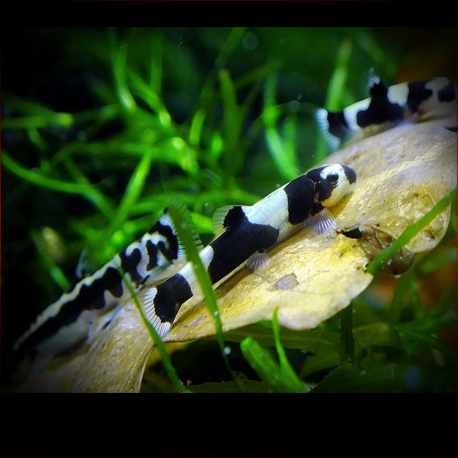More info
Datasheet
| Minimum Tank Size | 60 litres / 15.85 US gallons |
| Maximum Size | 6.0cm / 2.36inches |
| Temperature | 18°C / 64.40°F - 24°C / 75.20°F |
| Hardness | 2.02dgH / 36ppm - 15.02dgH / 268ppm |
| pH | 6.5-7.5 |
Behaviour
The Panda Loach is not an aggressive fish, but its environmental requirements can limit suitable tankmates. In nature, it is found alongside species such as Barilius, Discherodontus, Garra, Devario, some Rasbora, and Sicyopterus gobies. It tends to exist in loose aggregations and is territorial to some extent, with certain individuals being more protective of their space, especially prime feeding spots. It is recommended to keep a group of 4 or more Panda Loaches to observe their most interesting behavior.
Feeding and Diet
In the wild, the Panda Loach's diet consists of benthic algae and associated micro-organisms. In captivity, they accept dried foods, live or frozen bloodworms, but excessive protein can lead to internal issues. Homemade foods using natural ingredients bound with gelatin are beneficial, with a high proportion of fresh vegetables and Spirulina being ideal. Providing algae-covered rocks and surfaces in the aquarium is essential for long-term success. In some cases, maintaining a separate tank to grow algae may be necessary, especially if the main tank lacks sufficient algae due to herbivorous tank mates.
Reproduction & Dimorphism
Reproduction of the Panda Loach has not been recorded in captivity, and little is known about its natural reproductive cycle. Sexual dimorphism is undocumented, but larger, heavier-bodied individuals are presumed to be females.
Habitat and Distribution
The Panda Loach is found exclusively in shallow, seasonal, fast-flowing headwaters and minor tributaries in Jinxiu County, Guangxi Zhuang Autonomous Region, southern China. They prefer habitats with oxygen-saturated water and substrates of rocks, sand, and gravel, often with riparian vegetation. The species faces threats from dam construction, water quality loss, and fishing practices. Although not globally recognized as endangered, the overall population is small.
Aquarium Setup
The Panda Loach thrives in a clean, well-oxygenated aquarium with a turnover exceeding 15-20 times per hour. The tank should include a mix of gravel, sand, water-worn rocks, and pebbles. Aged driftwood can be added, and adaptable aquatic plants like Microsorum and Anubias spp. can provide cover. Maintaining stable water conditions and promoting the growth of algae and biofilm is crucial for the Panda Loach's well-being. Regular partial water changes are necessary, and a secure cover is recommended as they can climb glass surfaces.

